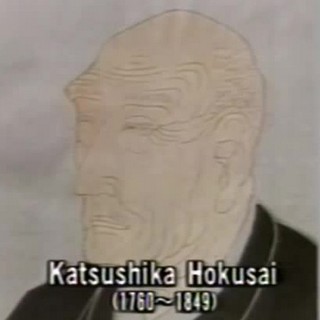
Woodblock printing was invented in China, and successfully used to print Buddhist sutras, which are amongst the earliest surviving examples of the art, dating from the 7th century.
The sutras would often be elaborately illustrated with pictures of the Bodhisattvas, the Pure Land, and donors in worshipful stance.
Woodblock printing remained the most popular form of printing in the Sino worlds for over 1,000 years, with the most famous example being the Tripitaka Koreana, with its over 80,000 wood blocks.
This documentary is not about Buddhist, but secular, art of the late 18th early 19th centuries in Japan, the time of the so-called floating world (ukiyo-e) images, and particularly about Hokusai, one of its most famous exponents.
The interest for us lies in the detailed look at just how woodblock printing is made, which is a very specialised and painstaking craft, which is well illustrated in this film.
In the 1980s it was found that amongst the American collector William Bigelow’s (1850-1926) donation to the Museum of Fine Arts in Boston were 50,000 wood blocks he had collected during his seven year stay in Japan in the 1880s.
Amongst the collection are some of the great works by Hokusai, Utumaro and others working in the floating world genre, and it was decided to take the blocks back to Japan to produce fresh prints from the blocks.
Although there are specialist institutes in Japan which carry on the tradition, the work proved to be very difficult and frustrating, and the documentary follows the craftsmen as they meet and overcome the difficulties faced during the process.
The film, made in the 1980s by Japanese TV, therefore provides a real insight into the difficulties of printing and the great pains our ancestors were at to pass on the scriptures to us in an age with more primitive technologies than our own.
if the video does not appear on the page, try reloading the page; and if that doesn’t work, leave a comment so I can update the page (the comment is not published)
to see an album of screenshots click here
